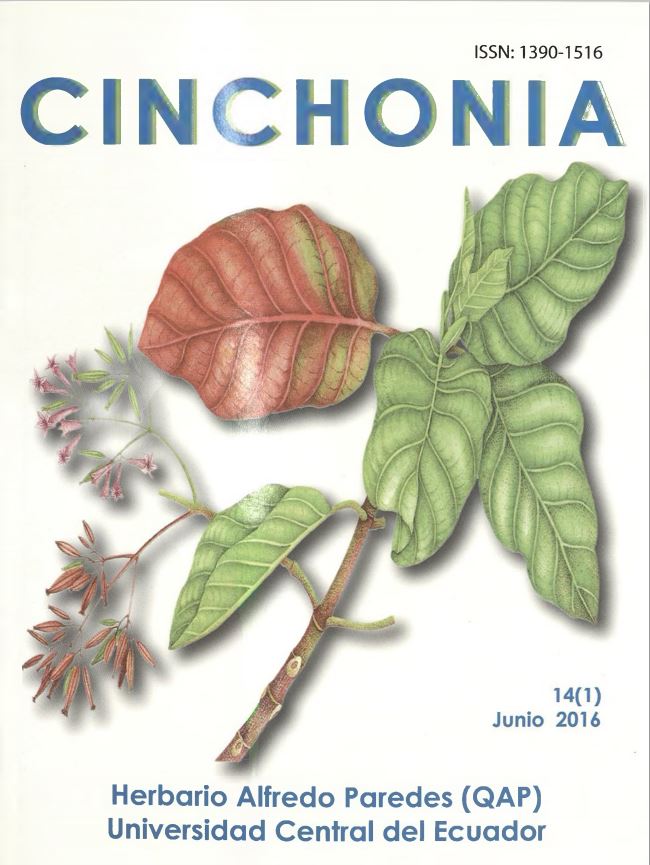Guía florística de los senderos cerro Mate y Pancho Diablo, Reserva Ecológica Manglares Churute, Guayas – Ecuador
Abstract
The place of study corresponds to the hills of Mate and Pancho Diablo in the Churute Mangrove Ecological Reserve, Naranjal canton of the Guayas province. The path of the Mate hill has an elongated form like a zigzag, with a distance of about 1 km. The coordinates 02 º 27.17 ‘S - 79 º 37.39’ W, 50 msnm (Beginning of the trail), 02 º 27.02 ‘S - 79 º 37.10’ W , 370 msnm (end of trail), the path of Pancho Diablo mount has a paddle-shaped, with a distance of about 1 km, its coordinates are in the binding of the circuit of 02 º 25.08 ‘S - 79 º 39.01`W , 35 – 100 msnm (middle part of path), vegetation type for the two paths: foothill semi-deciduous forest. Fieldwork was conducted in the month of June 2010, on marked trails and affirmed above, in which we proceeded to the tabulation and identification in situ of plant species, most of them were herborized mounted, labeled and deposited in the herbarium Alfredo Paredes (QAP). On the path of Matt Hill, 573 individuals were recorded for 106 species, the most common: Bactris coloniata (Arecaceae), Cochlospermum vitifolium (Bixaceae), Cedrela odorata (Meliaceae), Centrolobium ochroxylum (Fabaceae), Zamia poeppigiana (Zamiaceae), Machaerium millei (Fabaceae) y Spondias mombin (Anacardiaceae), while in the path of Mount Pancho Diablo, there were 348 individuals for 82 species, the most common: Guazuma ulmifolia (Malvaceae), Croton schiedeanus (Euphorbiaceae), Gallesia integrifolia (Phytolaccaceae), Attalea colenda (Arecaceae), C. vitifolium (Bixaceae), Triplaris cumingiana (Polygonaceae) y Zanthoxylum martinicense (Rutaceae). Between the two trails totaling 142 species with a similarity of 48.9% and 10.6% endemism, the habit is the dominant tree, is remarkable record of two species likely new to science of Malvaceae and Rubiaceae families, the newrecordforthecountryofActinostemon concolor (Euphorbiaceae) and the collection of rare species Acanthocladus guayaquilensis (Polygalaceae). The trails are accessible through via Guayaquil - Puerto Inca - Machala and they are important for environmental education and ecotourism, which can be observed in addition to endemic species, diversity of life forms adapted to the coastal ecosystems and a great diversity of fauna characteristic of these landscapes, including the most obvious for appearing in several herds, the “howler monkey” Alouatta palliata (Atelidae).


